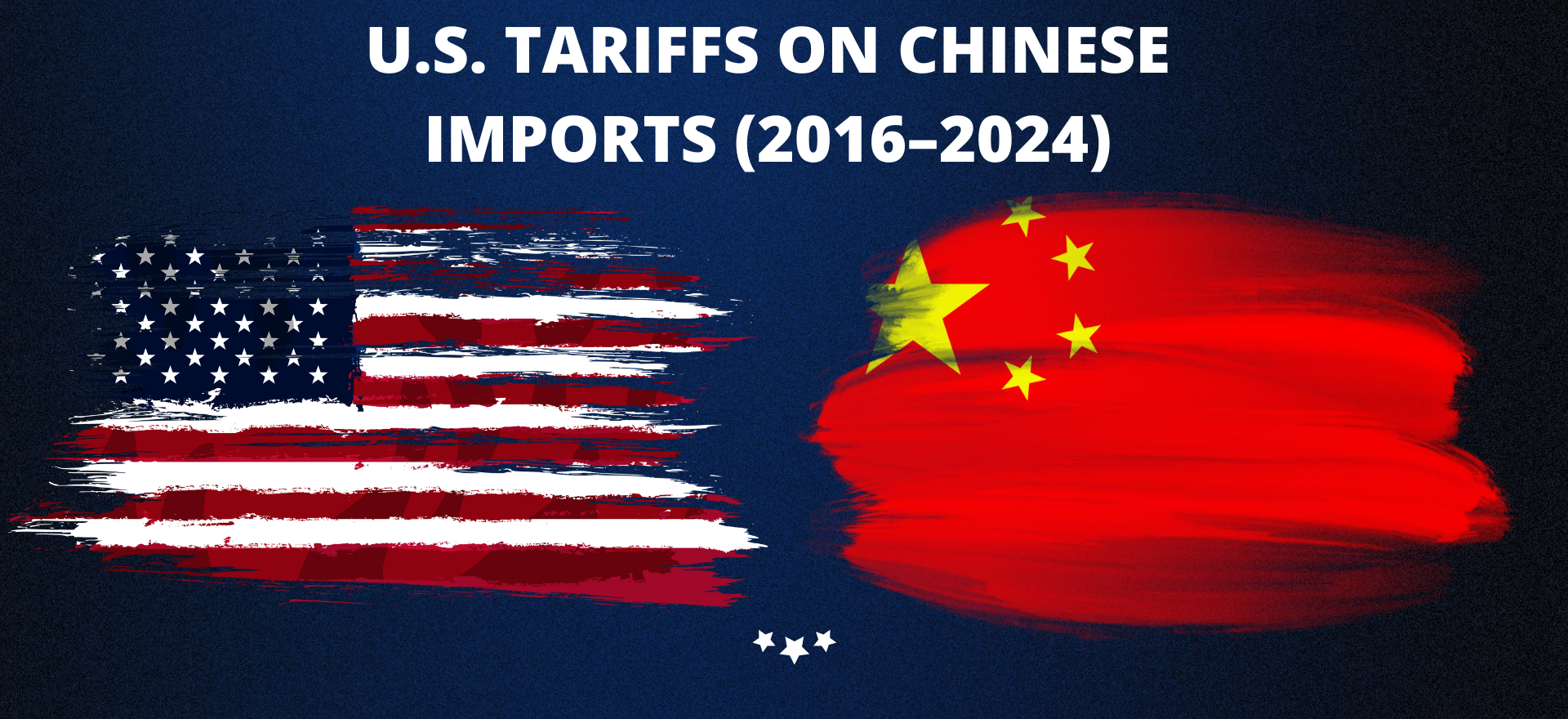
The trade relationship between the United States and China has been one of the most critical and contentious economic dynamics in recent history. From the initiation of a trade war under the Trump administration to the Biden administration’s strategic recalibrations, tariffs have remained a central tool of U.S. trade policy.
Over this period, tariffs have shifted from being a mechanism to address trade imbalances to becoming a broader instrument for protecting critical industries and addressing national security concerns. While the Trump administration’s approach was characterized by aggressive tariff hikes and retaliatory measures, the Biden administration has focused on maintaining these tariffs while targeting strategic sectors like clean energy, semiconductors, and critical minerals.
In this article, we’ll break down the timeline of key tariff actions, their economic implications, and how both countries have responded to these measures. Whether you’re a business owner, policymaker, or simply interested in global trade, this guide provides a clear and detailed overview of one of the most significant trade disputes of the 21st century.
Pre-2018: Baseline Tariffs
Before 2018, U.S. tariffs on Chinese imports were relatively low, adhering to Normal Trade Relations (NTR) rates. These averaged 3–5% for most products, with no major unilateral tariff actions during this period.
2018–2020: Trump Administration’s Trade War
The trade landscape shifted dramatically in 2018 when the Trump administration launched a trade war with China, citing unfair trade practices like forced technology transfers and intellectual property theft. Key actions included:
July 2018: 25% tariffs on $34 billion worth of Chinese goods (e.g., machinery, electronics).
August 2018: Expanded to $50 billion, including semiconductors and industrial equipment.
September 2018: 10% tariffs on $200 billion of goods (later raised to 25% in 2019).
Steel and Aluminum Tariffs: 25% on steel and 10% on aluminum under Section 232, citing national security concerns.
China’s Retaliation: In response, China imposed tariffs on $110 billion of U.S. goods, targeting key sectors like agriculture and automotive.
2021–2023: Biden Administration’s Continuation and Review
The Biden administration maintained most Trump-era tariffs while conducting a statutory four-year review in 2022 to assess their effectiveness.
May 2022: The U.S. Trade Representative (USTR) began the review process, receiving over 1,500 public comments.
Key Findings: Tariffs reduced U.S. reliance on Chinese imports in sectors like steel and electric vehicles (EVs) but had a small negative impact on the U.S. economy.
No Major Changes: Despite the review, the Biden administration kept existing tariffs in place through 2023.
2024: Biden’s Strategic Tariff Increases
In 2024, the Biden administration announced significant tariff hikes targeting strategic industries such as clean energy, technology, and critical minerals. These changes aimed to protect U.S. manufacturing and counter China’s cyber theft and industrial espionage.
New Tariff Rates (Effective September 27, 2024):
|
Product Category |
New Tariff Rate |
Previous Rate |
|
Electric Vehicles (EVs) |
100% |
25% |
|
Lithium-ion EV Batteries |
25% |
7.50% |
|
Solar Cells |
50% |
25% |
|
Steel and Aluminum Products |
25% |
0–7.5% |
|
Semiconductors |
50% |
25% (effective Jan. 1, 2025) |
|
Syringes and Needles |
100% |
N/A |
|
Medical Gloves |
100% (phased by 2026) |
N/A |
|
Critical Minerals (e.g., Graphite) |
25% |
N/A |
Exemptions: Temporary exclusions were granted for solar manufacturing equipment and ship-to-shore cranes ordered before May 2024.
Impact and China’s Retaliation
The 2024 tariff hikes had significant effects on trade dynamics:
U.S. Imports: Sharp declines in Chinese imports of lithium-ion batteries and solar cells, while steel and aluminum imports remained low (2–3% of total U.S. imports).
China’s Retaliation: In February 2024, China imposed 10–15% tariffs on U.S. coal, LNG, and automobiles.
Global Trade Diversification: Despite U.S. tariffs, China’s global exports grew 36% from 2018–2023, with increased trade to ASEAN and EU markets.
What’s Next for U.S.-China Trade?
The evolving tariff landscape reflects the U.S. government’s focus on reducing reliance on Chinese imports while fostering domestic industries. However, with China’s retaliatory actions and global trade diversification, the long-term impact remains complex. For businesses navigating these changes, staying informed on tariff updates and leveraging supply chain alternatives will be critical.









